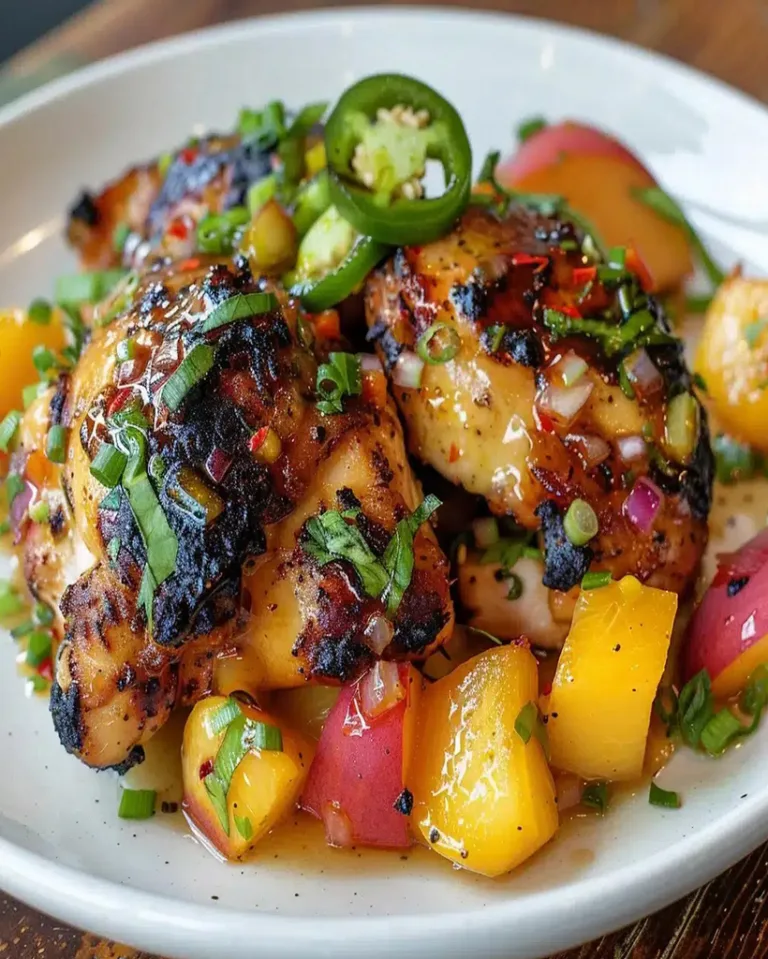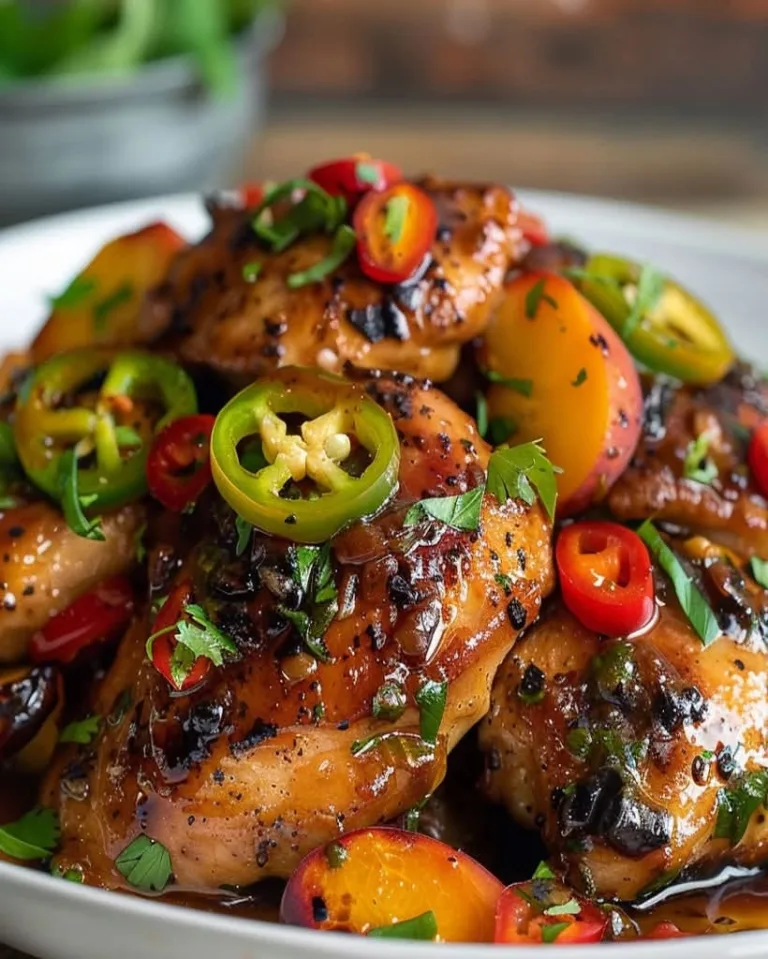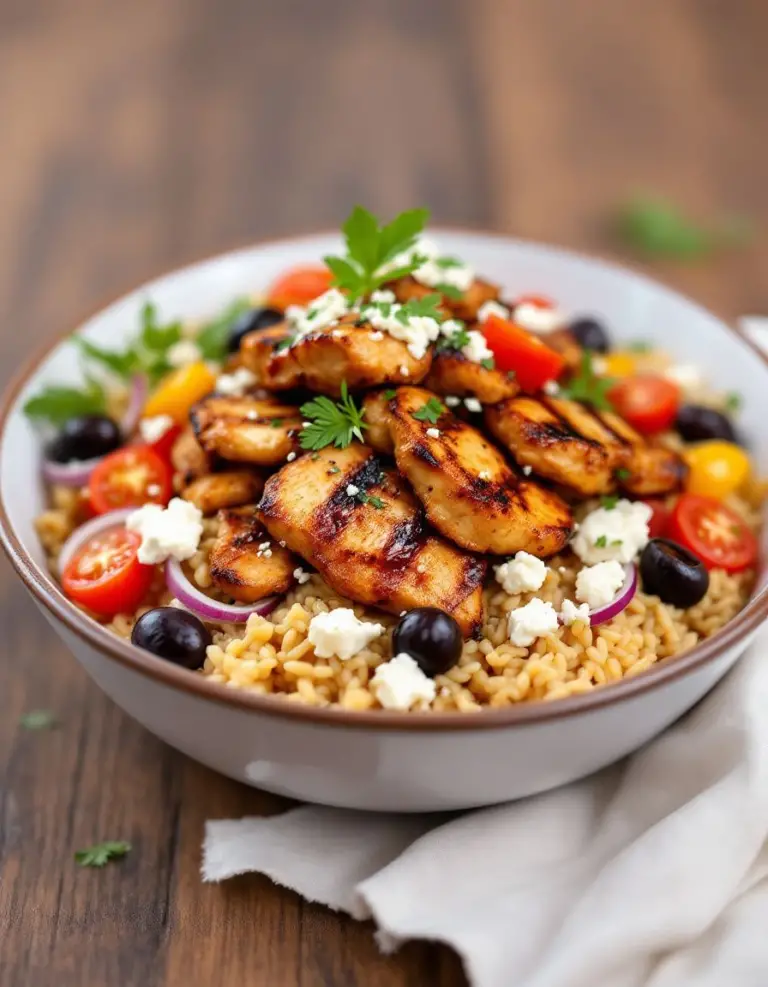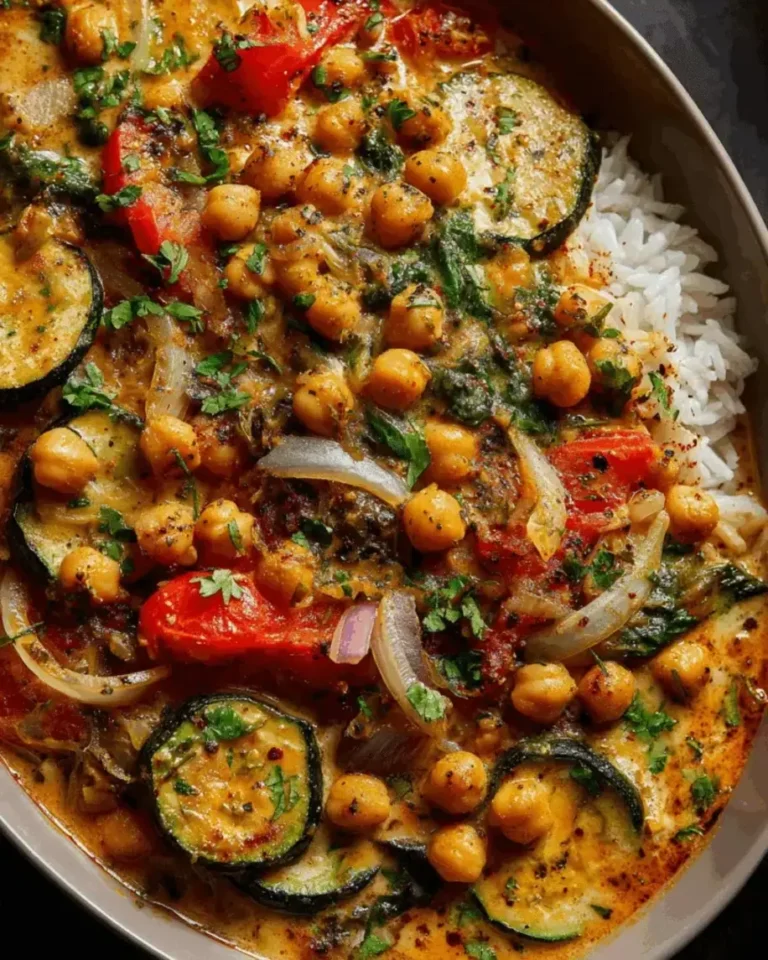Easy Scallion Chicken Recipe – Ready in 30 Minutes
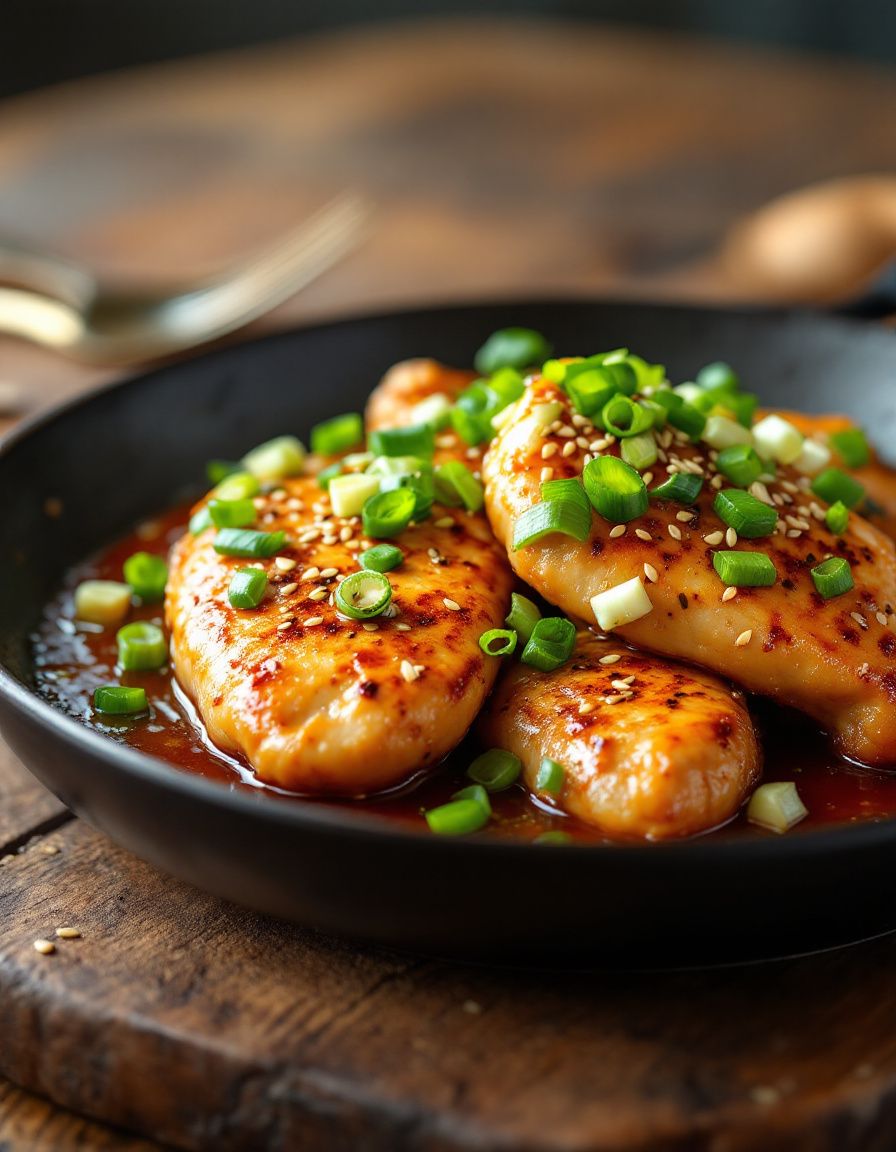
Scallion Chicken Recipe: Quick, Easy & Full of Flavor!
This Scallion Chicken Recipe is your go-to dish for a delightful meal that’s both quick and easy to prepare! With its succulent chicken pieces infused with the fresh, zesty taste of scallions, it’s a culinary adventure that brings the vibrant flavors of Asian cuisine right to your kitchen. The tender chicken, marinated to perfection and sautéed to a golden hue, pairs beautifully with earthy rice or crispy vegetables. Let the savory aroma fill your home as this dish whisks you away to a cozy dinner table setting.
The beauty of the Scallion Chicken lies not only in its divine taste but also in its simplicity. In just 25 minutes, you can have a dish that’s overflowing with flavor and impressive enough for guests. The tender chicken complements the sharpness of the scallions, creating a dish that’s not only visually appealing but a true feast for your taste buds. Prepare to tantalize your senses and elevate your weeknight dinner game!
Quick Recipe Highlights
- Flavor Profile: The combination of savory soy sauce, earthy scallions, and tender chicken creates a flavor explosion that is both comforting and invigorating.
- Texture: Enjoy the delightful contrast of succulent chicken with crispy scallions adding a refreshing crunch to each bite.
- Aroma: A symphony of scents fills the air as garlic, ginger, and scallions meld together, creating an inviting atmosphere.
- Visual Appeal: The vibrant green scallions against the golden-brown chicken make this dish a showstopper on any dinner table.
- Skill Level Needed: This easy recipe is perfect for home cooks of all levels, making it simple enough for beginners while still satisfying for seasoned chefs.
- Special Equipment: A non-stick skillet or wok is ideal for this recipe, ensuring the chicken cooks evenly without sticking.
Recipe Overview
- Difficulty Level: The Scallion Chicken recipe is straightforward, requiring minimal technique and expertise, making it accessible for beginner cooks.
- Category: This dish fits well within a main course category, perfect for lunch or dinner.
- Cuisine: Strongly inspired by Asian culinary traditions, scallion chicken reflects a fusion of flavors that are both rustic and refined.
- Cost: With affordable ingredients like chicken, scallions, and soy sauce, preparing this dish is budget-friendly.
- Season: This recipe shines in spring and summer when scallions are at their freshest and most flavorful.
- Occasion: Ideal for family dinners, weeknight meals, or as a quick dish when entertaining guests.
Why You’ll Love This Recipe
This Scallion Chicken Recipe is a celebration of taste and texture that will leave your dining companions impressed and satisfied. The tender, juicy pieces of chicken, perfectly seasoned with soy sauce, create a savory foundation, while the bright, crisp scallions add a refreshing twist, making each bite a delightful experience. This dish expertly balances flavors and textures, ensuring there’s never a dull moment as you enjoy your meal.
In terms of convenience, this recipe is a gem for busy weeknights. The quick prep and cooking times allow you to whip up a delicious meal in under 30 minutes. By keeping the ingredients simple, you save time without sacrificing flavor or quality. This aspect makes scallion chicken an excellent choice for anyone juggling a hectic schedule while striving to enjoy home-cooked meals.
Nutritionally, this dish provides a great source of protein while being low in carbs, making it a healthy addition to your meal rotation. The fresh scallions add nutritional value by introducing vitamins A, C, and K, along with antioxidants that benefit your overall health. Enjoy the wholesome goodness wrapped in this savory delight every time you serve it.
The social aspect of the Scallion Chicken Recipe allows for a lovely gathering around the table. Shared meals are made special with flavorful dishes that bring people together. This dish can easily be served alongside other favorites or accompanied by rice and steamed vegetables for a complete feast, making it perfect for socializing and entertaining.
Finally, this recipe is cost-effective and accessible, ensuring that anyone can source the ingredients from their local grocery store without breaking the bank. With just a handful of affordable items, you can create a memorable meal that rivals takeout options — now that’s what we call a win-win!
Historical Background and Cultural Significance
The origin of the Scallion Chicken can be traced back to various Asian culinary traditions, where using fresh herbs and greens is a hallmark. In many Asian households, fresh scallions are a staple ingredient due to their ease of growth and availability, reflecting local agriculture and seasonal cooking practices. The incorporation of scallions into chicken recipes showcases the practice of enhancing meat dishes with vibrant, aromatic additions that elevate the overall dining experience.
Culturally, scallions hold significance across numerous cuisines, symbolizing freshness and vitality. In countries like China, scallions are revered not just for their flavor but also for their health benefits. Many cultures believe that scallions promote good health and longevity. As a result, scallion chicken has become a celebrated dish that unites families around the table in various regions, all enjoying its delightful taste and warm nostalgia.
Over the years, the recipe for Scallion Chicken has evolved through adaptability and regional influences. Different variations can be found in markets worldwide, each with its unique twist on preparation and flavoring. Whether using spicy sauces, diverse marinades, or varying cooking techniques, scallion chicken remains a reliable dish that resonates with many people’s tastes.
Regional variations of scallion chicken offer exciting takes and adaptations that celebrate local ingredients and flavors. In some areas, it may be served with a spicy dipping sauce, while others might pair it with vermicelli or rice noodles. Such adaptations not only highlight the versatility of this dish but also reflect the culinary diversity found within Asian cooking.
Ingredient Deep Dive
Chicken
The central ingredient in this Scallion Chicken Recipe is undoubtedly the chicken. As a beloved protein source globally, its versatility allows for various cooking methods and flavor profiles. Chicken is celebrated for its nutritional benefits, providing a rich source of protein essential for muscle repair and overall health. When selecting chicken, look for fresh, plump pieces with no blemishes to ensure quality. Storage is crucial; keep chicken in its original packaging in the fridge and consume it within a few days for the best quality.
Scallions
Scallions, also known as green onions, are packed with flavor and nutritional goodness. They have been used historically in many cultures for their ability to enhance dishes with a mild onion flavor and vibrant color. Rich in vitamins A, C, and K, scallions contribute to improved health and well-being. Choose scallions that are firm and bright green, with no wilting, to ensure freshness. Store them in the fridge wrapped in a damp paper towel, and they can last up to a week.
Common Mistakes to Avoid
- Overcooking the chicken: This can lead to dry, tough meat. Ensure you monitor the cooking time closely, aiming for a golden brown crust while retaining moisture.
- Using old scallions: Freshness is key for flavor. Use firm, vibrant green scallions to achieve the best taste and nutritional benefits.
- Ignoring marination time: While this recipe is quick, marinating the chicken for at least 30 minutes enhances the flavor significantly.
- Not slicing scallions correctly: Improperly sliced scallions can lead to inconsistent cooking. Use thin, even slices for better texture in the final dish.
- Skimping on the seasoning: Ensure you season adequately with soy sauce and spices to prevent a bland dish.
- Using too little oil: Insufficient oil can cause the chicken to stick to the pan, ruining the cooking process and affecting texture.
- Skipping the resting time: Allowing the chicken to rest post-cooking retains its juices, leading to a more succulent result.
- Neglecting to degrease: If you notice excess oil at the end of cooking, consider carefully draining it for a leaner dish.
- Overcrowding the pan: Cooking in batches allows for better searing and prevents steaming, resulting in a more evenly cooked dish.
- Misjudging cooking time: Different cuts of chicken may require varying cooking times. Ensure you adjust accordingly depending on whether you are using breasts, thighs, or wings.
Essential Techniques
Marinating the Chicken
Marinating is a crucial step that infuses the chicken with layers of flavor. Combine soy sauce, ginger, garlic, and a touch of sesame oil, and let the chicken soak up these aromas for at least half an hour. Mastering this step leads to a chicken dish that’s bursting with depth and taste. Watch for the chicken to absorb the marinade; the longer it sits, the richer the flavor.
Searing the Chicken
Searing over high heat is essential to create a beautiful golden crust while locking moisture inside the chicken. Start with a pre-heated non-stick skillet and avoid overcrowding the pan. This process enriches the flavor profile and improves the dish’s overall texture. Ensure you listen for the satisfying sizzle—a good sign that you are on the right track!
Pro Tips for Perfect Scallion Chicken
One of the most important tips is to always use fresh ingredients, as they contribute significantly to the overall flavor and nutritional value of the dish. Fresh scallions and chicken make a noticeable difference that can elevate your dish from average to extraordinary.
Pay attention to your cooking surface—using a cast-iron skillet can achieve perfect searing due to even heat distribution. This will ensure your chicken gets a beautifully browned exterior while staying juicy inside.
For flavor enhancements, consider adding a splash of lemon juice or a sprinkle of sesame seeds right before serving. This addition will brighten the dish and provide textural contrast.
Ensure that the chicken is fully dry before marinating or cooking. Excess moisture can cause steaming instead of proper browning, so pat the surface dry for the best results.
Experiment with different soy sauces, from light to dark, to explore various depths of flavor for the meat. A balance of sweet, salty, and umami will lead to a satisfying outcome.
Lastly, don’t hesitate to customize the garnish. A sprinkle of coriander or toasted sesame seeds on top just before serving can enhance not only the flavor but also the visual appeal of your Scallion Chicken dish.
Variations and Adaptations
Explore regional variations of Scallion Chicken by incorporating local spices and ingredients. For a spicier version, add chili flakes or a dash of sriracha to the marinade. In contrast, a pleasantly sweeter taste can be accomplished by incorporating honey or brown sugar into the mix.
For seasonal adaptations, consider adding thinly sliced vegetables like bell peppers or snap peas during cooking to enhance the nutrient value while providing a crunchy texture. This addition creates a more rounded meal that is still quick and easy to prepare.
Dietary modifications can easily accommodate those with specific needs. For a gluten-free version, opt for tamari or coconut aminos as a substitute for soy sauce, ensuring that all diners can enjoy this dish.
Individuals on a low-carb diet can enhance the recipe by serving it over cauliflower rice instead of traditional rice, maintaining the flavor profile while adhering to their dietary preferences.
Lastly, for those wishing to change textures, add toasted nuts or crispy vegetables as a garnish to give the dish an exciting twist. These crunch elements will create an intriguing mouthfeel that complements the tender chicken.
Serving and Presentation Guide
For a stunning presentation, consider plating the Scallion Chicken on a large white platter, allowing the vibrant colors of the dish to pop. Use tongs to gently arrange the chicken pieces, highlighting the glossy exterior and inviting appearance.
Garnish the dish with vibrant scallions and a sprinkle of sesame seeds that will not only enhance the visual appeal but also signal the fresh flavors awaiting your diners. Serving with a side of steamed jasmine rice or stir-fried vegetables adds color and balance to the plate, creating a complete meal that’s visually cohesive.
Consider temperature when serving. Scallion Chicken is best enjoyed warm; therefore, have all components prepped and ready to maintain the dish’s heat. Ensure that everyone at the table receives equal portions, promoting a sense of sharing and togetherness.
For a modern twist, serve alongside individual bowls of dipping sauces allowing guests to customize their flavors, adding an interactive element to the meal. This approach adds an exciting social atmosphere while ensuring everyone’s unique tastes are catered to.
Wine and Beverage Pairing
When it comes to pairing wine with your Scallion Chicken, a crisp Riesling complements the savory flavors beautifully. Its fruitiness balances the dish’s umami aspects and adds a refreshing contrast. Alternatively, a light white wine like Sauvignon Blanc also works well, enhancing the dish’s overall experience without overpowering it.
For those preferring non-alcoholic beverages, consider pairing with a sparkling lemonade or ginger ale, both of which add a refreshing zest to the meal. Their effervescence will cleanse the palate, making each bite of Scallion Chicken satisfying.
If coffee or tea is more your style, a light green tea served hot can enhance the dish’s flavors further while its subtle earthiness aligns with the scallions. Be mindful of serving temperatures, ensuring your beverages are chilled or hot accordingly, enhancing the overall dining experience.
Storage and Shelf Life
To store your Scallion Chicken properly, allow it to cool completely before transferring it to an airtight container. Store in the refrigerator for up to 3-4 days, allowing you to enjoy leftovers throughout the week.
If you plan to keep your dish longer, consider freezing it. Place the cooled chicken in a freezer-safe container, separating portions for convenience. The dish can be frozen for up to 2-3 months. Ensure to label the container with the date for your reference.
When reheating, use the microwave or stovetop, adding a splash of water to retain moisture. Heat based on portion size and be cautious not to overcook it again, which may result in dryness.
Signs of spoilage include a sour smell or discoloration, indicating that it’s best to discard the dish rather than risking food safety.
Make Ahead Strategies
For the ultimate time-saving strategy, consider marinating your chicken the night before. This prep will deepen the flavors and allow for quick cooking the next day. Store it in the refrigerator in an airtight container to maintain its moisture and flavor.
When preparing other components, you can chop the scallions and any vegetables in advance, keeping them stored in a sealed bag or container. This will ensure that your cooking process is quick when you’re ready to throw everything together.
For those planning a dinner party, you can fully prepare the dish up to when you need to add heat. Simply follow the directions up until the cooking step, then refrigerate. A quick reheat before guests arrive ensures fresh and hot Scallion Chicken at the table with minimal last-minute effort.
Lastly, add fresh ingredients, such as scallions or garnishes, right before serving to maintain their crispness and vibrant appearance, ensuring a fantastic presentation.
Scaling Instructions
Scaling the Scallion Chicken recipe is straightforward. If you’re halving the recipe, adjust the ingredient quantities accordingly, but the cooking time should stay roughly the same, while monitoring the chicken doneness closely.
Conversely, to double or triple the recipe, ensure you have a large enough cooking surface. Cooking in batches will help ensure that the chicken sears well without overcrowding the pan, leading to a more evenly cooked dish.
Adjusting cooking times may be required based on how much you’re preparing. Keep in mind that larger batches may take slightly longer in total to reach the desired internal chicken temperature.
In terms of storage, ensure that your containers can accommodate the increased volume of food. Consider portioning leftovers into smaller containers for easier reheating and serving.
Nutritional Deep Dive
In terms of macronutrients, the chicken provides a substantial source of protein, essential for muscle growth and overall health, while scallions contribute minimal caloric content, making this dish a healthy option. Depending on the portion size, each serving can contribute a couple of hundred calories, allowing you to indulge without guilt.
For micronutrient analysis, this dish is rich in vitamins such as A, C, and K, which are imperative for immune health and vision. Scallions’ antioxidant properties also support overall wellness, showcasing the nutritional benefits of including vegetables in meals.
When considering dietary aspects, the dish is naturally lower in carbohydrates, perfect for individuals following low-carb diets while offering plenty of flavor. Portion control is necessary for individuals managing their weight, making mindful servings a crucial factor for enjoyment without overindulgence.
Finally, both the chicken and scallions promote hydration due to their water content, which can be beneficial in a balanced diet. Including this Scallion Chicken Recipe as part of your regular meal plans can contribute positively to your overall nutrition.
Dietary Adaptations
To adapt this Scallion Chicken Recipe for gluten-free diets, simply substitute soy sauce with gluten-free tamari or coconut aminos. These alternatives provide similar flavor profiles without the gluten.
For those who are dairy-free, this recipe is inherently dairy-free as it doesn’t use any dairy products in its ingredients or preparations, making it suitable for those with lactose intolerance.
Vegans can get creative by swapping out the chicken for tofu or tempeh, enhancing the recipe with a marinade that draws out the flavors of the scallions while ensuring a satisfying texture.
Low-carb dieters will find this dish fitting their needs, especially when served with stir-fried vegetables or cauliflower rice instead of traditional rice, maintaining a flavorful and satisfying meal.
Keto enthusiasts can enjoy this dish by simply monitoring portion sizes, ensuring balanced consumption. The high protein content from chicken paired with low carbohydrates can fit well into their dietary plan.
Lastly, this recipe can be compatible with the Paleo diet by ensuring that all ingredients are fresh and unprocessed, maintaining the natural flavors and nutrients intact.
Troubleshooting Guide
If your Scallion Chicken ends up dry, this could be due to overcooking. Always monitor your cooking time closely, aiming for juicy, tender chicken. If you have leftover dry chicken, consider shredding it into salads or mixing it into fried rice to elevate flavor.
Balancing flavors can be tricky; if the dish is too salty, dilute it with a hint of sweetness such as honey or brown sugar to counteract the sodium. Conversely, if it lacks depth, adding a little more soy sauce or some broth can boost the overall taste.
Temperature issues can arise; chicken should always reach an internal temperature of 165°F. Use a meat thermometer for accuracy, preventing undercooking or overcooking for perfectly safe and juicy chicken.
Equipment challenges may come into play if your pan isn’t non-stick. Use ample oil, ensuring the chicken doesn’t stick to the surface. If preparing a larger batch, be aware that cooking times may vary as a result of heat fluctuation.
For ingredient substitutions, if scallions are unavailable, consider using other fresh herbs like chives or green garlic for a similar flavor profile though the taste will differ slightly.
Timing concerns should also be monitored closely, especially with thick pieces of chicken. Adjust the cook time based on the size of your cuts to ensure even cooking throughout.
Recipe Success Stories
The Scallion Chicken Recipe has seen much success among home chefs, with community feedback praising its flavor and ease of preparation. Many have shared their adaptations, from adding unique vegetables to experimenting with marinades, all with delightful results that resonate with everyone’s taste buds.
Readers have also offered valuable suggestions, such as tweaking the marinade to include additional spices or incorporating fresh herbs for an exciting twist. These ideas have sparked creativity among fellow cooks who wish to put their unique spin on this dish.
Photography tips from the cooking community have helped elevate the presentation, encouraging diners to capture the vibrant colors of the dish. Plating techniques, garnishing with fresh herbs, or including exotic rice have all contributed to memorable dining experiences.
A variety of cooking tips have been exchanged, with individuals sharing insights into the best cooking techniques—ensuring perfectly cooked chicken and flavorful scallions every time. Collectively, these success stories contribute to creating a sense of community around this dish.
Finally, those who have prepared Scallion Chicken often mention how easy it is to adapt for specific dietary needs, whether to cater to vegetarians or enhance nutritional value, showcasing the dish’s versatility.
Frequently Asked Questions
1. Can I use chicken thighs instead of breasts?
Absolutely! Chicken thighs are a great alternative, providing a juicier cut of meat. Just adjust cooking times accordingly, as thighs typically require a bit more time to cook through.
2. Can I prepare this dish in advance?
Yes, you can marinate the chicken a day ahead to enhance the flavors. However, cook just before serving to maintain the best texture.
3. What should I serve with Scallion Chicken?
This dish pairs wonderfully with steamed rice, stir-fried vegetables, or even noodles for a more filling meal.
4. How long can I store the leftovers?
Leftover scallion chicken can be stored in the fridge for 3-4 days in an airtight container. You can also freeze it for up to 3 months.
5. Can I make this recipe vegetarian?
Yes! Substitute chicken with tofu or tempeh for a delicious plant-based meal that still retains the original flavors of the dish.
6. Is scallion chicken spicy?
This recipe is not inherently spicy, but you can customize it by adding chili flakes or sriracha for a flavorful kick.
7. What kind of soy sauce should I use?
Using light soy sauce is recommended for flavoring; however, dark soy sauce can add a rich color if you’re looking for a deeper flavor.
8. How do I know when my chicken is fully cooked?
The internal temperature of the chicken should reach at least 165°F. Always use a meat thermometer to ensure the chicken is safely cooked.
9. Can I add other vegetables to the recipe?
Absolutely! Feel free to add snap peas, carrots, or bok choy for added flavor, nutrition, and texture in your dish.
10. How can I make the dish gluten-free?
Simply use gluten-free soy sauce or coconut aminos to ensure the dish remains delicious without any gluten-containing ingredients.
Additional Resources
If you enjoyed this Scallion Chicken Recipe, explore other related recipes like Chicken Stir-Fry with Vegetables or Teriyaki Salmon, both offering incredible flavors and quick preparation.
Techniques guides like “How to Perfectly Sear Chicken” can enhance your cooking skills, ensuring you achieve delicious results every time.
For more ingredient information, delve into the properties of scallions and their health benefits, expanding your culinary repertoire while learning more about the ingredients you use.
If you’re looking for essential kitchen equipment, consider investing in quality non-stick pans or woks that can make all the difference in the cooking process.
For seasonal variations, explore recipes that make use of seasonal fruits and vegetables, keeping your cooking fresh and exciting throughout the year.
Join the Conversation
We would love to hear about your experience with the Scallion Chicken Recipe! Share your thoughts on social media using our hashtag, and let us know your favorite variations or adaptations.
Photography enthusiasts, feel free to tag us in your images showcasing the vibrant colors and enticing presentation of your finished dish. This is a wonderful way to inspire others to try their hands at this delightful recipe.
We also encourage you to leave reviews and comments on your experiences, helping us build a community around these flavors and dishes. Your input matters as we strive to create a shared platform filled with culinary joy.
Sharing your unique adaptations can spark creativity in others, showcasing the versatility of the Scallion Chicken, and enriching our collective culinary library. Happy cooking!
The Recipe
Scallion Chicken
Serves: 4
Prep Time: 10 mins
Cook Time: 15 mins
Total Time: 25 mins
Kitchen Equipment Needed
- Non-stick skillet or wok
- Cutting board
- Knife
- Bowl for marinating
- Meat thermometer
Ingredients
- 1 lb chicken breast, cut into bite-sized pieces
- 4 scallions, sliced thinly
- 3 tablespoons soy sauce
- 1 tablespoon sesame oil
- 2 cloves garlic, minced
- 1 teaspoon ginger, minced
- 2 tablespoons olive oil (for cooking)
- Salt and pepper to taste
Directions
- In a bowl, combine chicken, soy sauce, sesame oil, garlic, ginger, salt, and pepper. Marinate for at least 30 minutes.
- Heat olive oil in a non-stick skillet over medium-high heat.
- Add the marinated chicken to the skillet, cooking until golden brown and cooked through, about 7-10 minutes.
- Add scallions to the chicken in the last 2 minutes of cooking, allowing them to wilt slightly.
- Serve immediately, garnished with additional scallions if desired.
Recipe Notes
- For a spicier kick, add red pepper flakes or sriracha to the marinade.
- Leftover chicken can be stored in the refrigerator for up to 4 days or frozen for up to 3 months.

